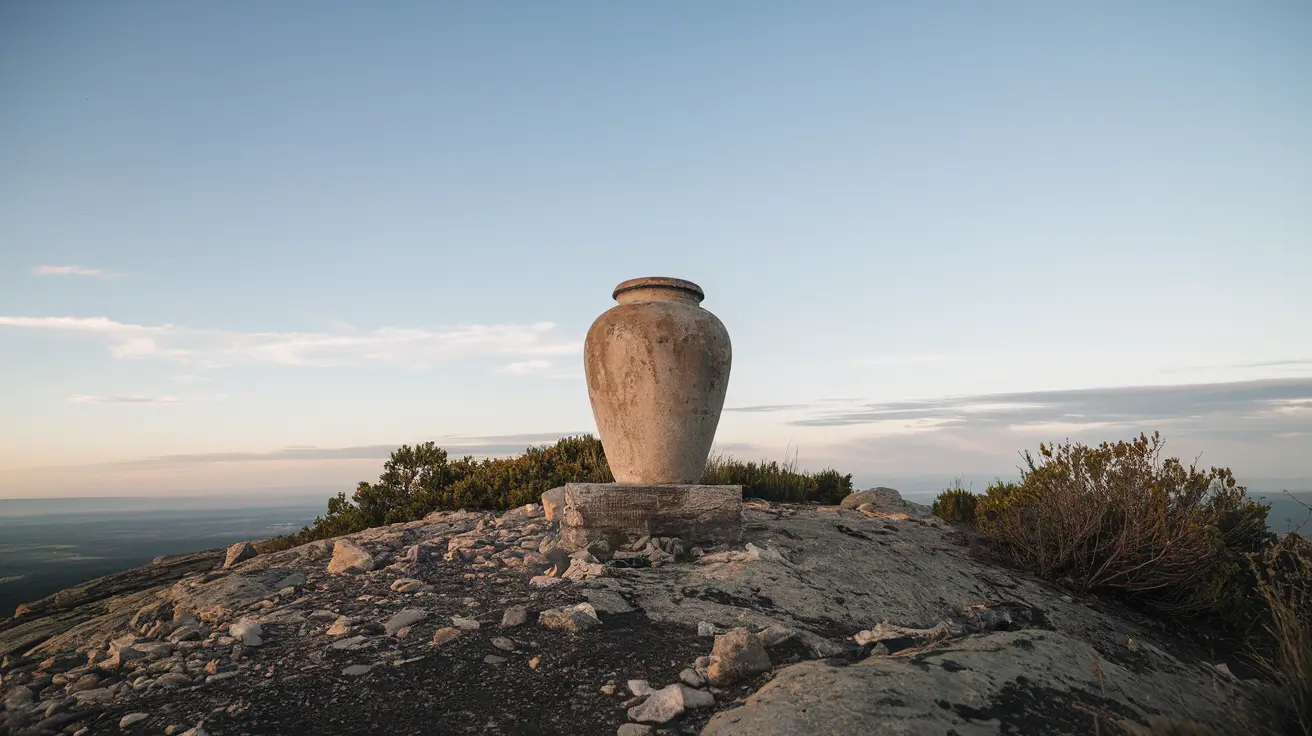- Friday, December 6, 2024
Headstones, Grave Markers, and Monument Options: A Comprehensive Guide
Honoring the memory of a loved one is a profound and personal endeavor, and one of the most enduring ways to do so is through the selection of a headstone, grave marker, or monument. These memorials serve not only as physical testaments to a person’s life but also as places for family and friends to […]
Honoring the memory of a loved one is a profound and personal endeavor, and one of the most enduring ways to do so is through the selection of a headstone, grave marker, or monument. These memorials serve not only as physical testaments to a person’s life but also as places for family and friends to visit, reflect, and find solace. Navigating the myriad of options available can be overwhelming, but understanding the various aspects of headstones, grave markers, and monuments can help you make an informed and meaningful choice. This comprehensive guide explores the types, materials, styles, personalization options, regulations, maintenance, cultural and religious considerations, environmental impacts, and budgeting tips to assist you in selecting the perfect memorial.
Understanding the Purpose
Headstones, grave markers, and monuments each play a unique role in commemorating the deceased. Headstones are typically placed at the head of the grave and bear the individual’s name, dates of birth and death, and a brief epitaph or symbol. Grave markers can vary in size and style, serving to identify the grave while also incorporating additional personal details or decorative elements. Monuments are larger and more elaborate structures that often serve as significant landmarks within a cemetery, reflecting the stature or unique qualities of the individual being honored. Understanding the distinct purposes of each type of memorial helps in selecting the most appropriate option for honoring a loved one’s legacy.
Types of Headstones, Grave Markers, and Monuments
Headstones are the most common form of grave memorial, ranging from simple, flat markers to more elaborate upright structures. Traditional headstones often feature classic shapes with ornate details and religious symbols, suitable for conventional funeral services. Modern headstones embrace minimalist designs with clean lines and contemporary finishes, appealing to those who prefer a sleek aesthetic. Custom headstones allow for personalized touches, such as unique engravings, decorative handles, or custom artwork, ensuring that the memorial truly reflects the individuality of the deceased. Eco-friendly headstones prioritize sustainability and simplicity, often featuring a natural, rustic appearance that aligns with green burial practices.
Grave markers extend beyond traditional headstones, encompassing a variety of styles that cater to different aesthetic and symbolic preferences. These markers may feature religious symbols, personal interests, or nature elements that held significance to the deceased. Artistic grave markers incorporate mosaic tiles, stained glass, or sculptural elements, providing vibrant and creative tributes. Functional grave markers combine practical elements like benches or plaques with memorial inscriptions, offering dual-purpose markers that enhance the cemetery’s landscape while honoring the individual.
Monuments are larger and more elaborate, often serving as prominent features within a cemetery. Obelisks and pillars are tall, imposing structures that add grandeur and permanence to the memorial site. Statues and sculptures offer artistic representations that capture the essence of the deceased or meaningful symbols. Mausoleums provide enclosed structures that house multiple entombments, often adorned with intricate designs and personalized elements. The choice between a headstone, grave marker, or monument depends on various factors, including personal preferences, budget, and the desired level of permanence and visibility within the cemetery landscape.
Materials
The selection of materials is a crucial aspect of choosing a headstone, grave marker, or monument, as it impacts both the appearance and durability of the memorial. Granite is one of the most popular choices due to its strength, longevity, and wide range of color options. Granite is highly resistant to weathering, making it a favored material for long-lasting memorials. Marble, known for its elegant and timeless appearance, offers a classic look but requires more maintenance as it is susceptible to erosion and weathering. Bronze is often used for plaques and decorative elements, providing a distinguished and classic look that complements various design styles. Slate offers a unique texture and appearance, ideal for flat markers that blend seamlessly into the cemetery landscape. For those seeking environmentally sustainable options, recycled metals and sustainable materials like slate support eco-friendly practices without compromising quality or aesthetics. Glass and ceramic materials allow for creative designs, incorporating intricate artwork or personal photos, making them ideal for contemporary memorials.
Styles
The style of a headstone, grave marker, or monument significantly influences the overall tone and expression of the memorial. Traditional styles often feature classic shapes with intricate carvings and religious symbols, exuding elegance and formality. Modern styles embrace minimalist designs with clean lines and contemporary finishes, catering to those who prefer a more understated and sleek appearance. Custom styles allow for unique and personalized designs that reflect the individual’s personality, interests, or cultural heritage, ensuring that the memorial is as distinctive as the person it honors. Eco-friendly styles prioritize sustainability and simplicity, often featuring natural, rustic designs that align with green burial practices and environmental responsibility.
Personalization
Personalization ensures that the memorial truly reflects the individual’s life and legacy. Inscriptions on headstones and grave markers can range from simple names and dates to elaborate messages, quotes, or poems that capture the essence of the individual’s life or beliefs. Symbols and imagery, such as crosses, stars of David, flowers, or hobbies, can be incorporated to add depth and personal significance to the memorial. Decorative elements like engraved photographs, colored inlays, and custom artwork further enhance the personalization, making the tribute more relatable and memorable. Custom features such as lighting, interactive elements like QR codes linking to online memorials, and memorial benches combine functionality with personalization, creating a lasting and meaningful tribute.
Regulations and Cemetery Guidelines
Before finalizing a headstone, grave marker, or monument, it is essential to understand and adhere to the regulations and guidelines set forth by the cemetery. Cemeteries often have specific limits on the size and height of memorials to maintain a cohesive and respectful environment. Material restrictions may prohibit certain materials, such as glass or wood, or require the use of durable, weather-resistant materials like granite or bronze. Design and symbol guidelines ensure that memorials align with the cemetery’s aesthetic and cultural standards, preventing potential conflicts or modifications during installation. Placement rules dictate where memorials can be situated within the cemetery grounds, ensuring order and accessibility for visitors. Compliance and approval from cemetery officials are typically required before installation, making it important to work closely with them to ensure that the chosen memorial meets all necessary regulations.
Maintenance and Durability
The maintenance and durability of a headstone, grave marker, or monument are critical considerations to ensure that the memorial remains intact and visually appealing over time. Granite and bronze are renowned for their durability and resistance to weathering, requiring minimal maintenance and ensuring the longevity of the memorial. Marble, while beautiful, is more susceptible to erosion and may require periodic cleaning and maintenance to preserve its appearance. Slate offers a natural stone option with unique textures, though it may also require regular upkeep to maintain its aesthetic. Recycled metals and sustainable materials provide eco-friendly alternatives that support environmental responsibility while offering durability and longevity. Glass and ceramic memorials, while aesthetically pleasing, may need careful handling to prevent damage and maintain their integrity over time.
Cultural and Religious Considerations
Cultural and religious beliefs significantly influence the choice and design of headstones, grave markers, and monuments. Different traditions may have specific symbols, colors, or inscriptions that are preferred or required, reflecting deep-seated beliefs about death and the afterlife. For instance, some cultures prioritize simplicity and minimalism in memorials, while others favor ornate and detailed designs. Understanding and respecting these cultural and religious nuances ensures that the memorial not only honors the individual but also aligns with the family’s traditions and values, providing comfort and a sense of continuity.
Environmental Considerations
In an era increasingly focused on sustainability, environmental considerations play an important role in the selection of memorials. Eco-friendly options, such as biodegradable urns, slate markers, or caskets made from sustainable materials, cater to those who prioritize environmental responsibility. Green burial practices emphasize minimal environmental impact, and choosing materials that decompose naturally supports these values. Additionally, selecting durable and long-lasting materials reduces the need for frequent replacements, contributing to environmental conservation. By incorporating eco-friendly choices, memorials can honor the deceased while also reflecting a commitment to preserving the planet. Materials like recycled metals and sustainable stone options ensure that the memorial remains a respectful tribute without imposing additional strain on the environment.
Budgeting Tips
The cost of headstones, grave markers, and monuments can vary widely based on factors such as materials, size, complexity of design, and level of personalization. Setting a budget early in the decision-making process helps in narrowing down options and prioritizing features that are most important. Exploring financing options or payment plans offered by memorial providers can make the investment more manageable while ensuring that the memorial chosen aligns with both your financial considerations and desired tribute. Additionally, understanding the range of costs associated with different materials and styles allows for informed comparisons, enabling you to select a memorial that offers both quality and value within your budget constraints.
Installation and Placement
Proper installation and placement of a headstone, grave marker, or monument are essential for ensuring stability and compliance with cemetery regulations. Professional installation services are typically required to secure the memorial in place, preventing damage from environmental factors and ensuring that the structure remains upright and secure. Placement within the cemetery should also be carefully considered, taking into account visibility, accessibility, and the overall layout of the grounds. Consulting with cemetery staff and memorial providers during the installation process helps to ensure that the memorial is positioned correctly and enhances the overall aesthetic of the burial site. Proper placement not only ensures compliance with cemetery guidelines but also maximizes the visual impact and personal significance of the memorial.
Choosing the Right Option
Selecting the appropriate headstone, grave marker, or monument involves balancing personal preferences, cultural or religious traditions, budget, and practical considerations. Reflecting on the individual’s personality, values, and the desired level of permanence can guide you toward the most suitable option. Engaging in open discussions with family members and consulting with memorial professionals provides valuable insights and recommendations, ensuring that the final choice honors the deceased in a meaningful and respectful manner. Whether opting for a simple headstone, an elegant grave marker, or an elaborate monument, the goal is to create a lasting tribute that serves as a place of remembrance and reflection for generations to come.
Conclusion
Choosing the right headstone, grave marker, or monument is a deeply personal decision that honors the life and memory of a loved one. By understanding the various types, materials, styles, and customization options available, you can make an informed choice that aligns with your preferences, cultural or religious traditions, and budget. Whether you opt for a traditional granite headstone, a modern ceramic grave marker, or an elaborate bronze monument, the most important aspect is that the memorial reflects the unique spirit and legacy of the individual you are honoring. Take the time to explore your options, consult with funeral professionals, and choose a headstone, grave marker, or monument that provides comfort and serves as a meaningful tribute to a cherished life.
More Posts
No results available
Reset








